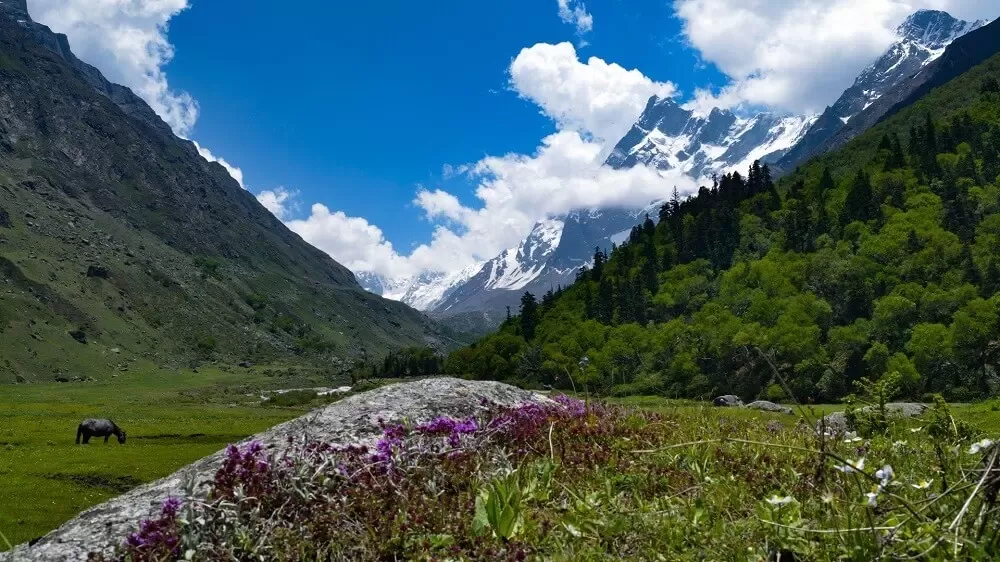Har Ki Dun Trek Introduction
Nestled in the Garhwal Himalayas of Uttarakhand, India, the Har Ki Dun trek is a mesmerizing journey that takes you through lush green meadows, dense forests, quaint villages, and snow-capped peaks. Often referred to as the "Valley of Gods," this trek is a perfect blend of natural beauty, cultural richness, and adventure. Whether you're a seasoned trekker or a beginner, Har Ki Dun Trek offers an unforgettable experience that connects you with nature and the ancient traditions of the region.
Trek Details
-
Altitude: 3,566 meters (11,700 feet)
-
Duration: 6-7 days
-
Best Time to Visit: April to June and September to December
The best time to visit har ki dun trek is during these months when the weather is pleasant, and the skies are clear, offering breathtaking views of the surrounding peaks. The winter months (December to February) transform the valley into a snow-covered wonderland, but the trek becomes more challenging due to the cold and snow.
The Enchanting Trail of Har Ki Dun
The Har Ki Dun trek begins from the small village of Sankri, which serves as the base camp. The trail winds through dense oak and pine forests, alongside the gushing Supin River, and opens up to vast meadows dotted with vibrant wildflowers. The route is adorned with panoramic views of towering peaks like Swargarohini, Bandarpoonch, and Black Peak, making every step a visual delight. The gradual ascent ensures that the trek is accessible to trekkers of all levels.
Read: Altitude and Distance of Har Ki Doon Trek
A Glimpse into Local Culture
One of the unique aspects of the Har Ki Dun trek is the opportunity to interact with the local communities. The trail passes through ancient villages like Osla and Gangad, where the warm-hearted Jaunsari people reside. Their traditional wooden houses, intricate temples, and age-old customs offer a glimpse into a way of life that has remained unchanged for centuries. The locals believe that Har Ki Dun is the route taken by the Pandavas during their ascent to heaven, adding a layer of mythological significance to the trek.
Flora and Fauna of Har Ki Dun
The Har Ki Dun valley is a biodiversity hotspot, home to a variety of flora and fauna. The forests are rich with rhododendrons, orchids, and medicinal plants, while the meadows are a haven for birdwatchers. If you're lucky, you might spot Himalayan monals, musk deer, or even the elusive snow leopard. The region is part of the Govind Pashu Vihar Wildlife Sanctuary, making it a paradise for nature enthusiasts.
Must Read: Har Ki Dun Trekking Owns Some Of The Exquisite Sights – A Brief Guide
Challenges and Preparations
While the Har Ki Dun trek is considered moderate in difficulty, it does require a good level of physical fitness. The trail involves walking for 6-7 hours daily, with some steep ascents and descents. Proper trekking gear, including sturdy shoes, warm clothing, and a reliable backpack, is essential. Acclimatization is also crucial, as the trek reaches an altitude of 3,566 meters (11,700 feet).
Conclusion
The Har Ki Dun trek is more than just a trek; it's a journey into the heart of the Himalayas, where nature, culture, and mythology intertwine. From the serene beauty of the valley to the warmth of the local communities, every moment on this trek is a treasure. Whether you're seeking adventure, solitude, or a deeper connection with nature, Har Ki Dun promises an experience that will stay with you forever. So, pack your bags, lace up your boots, and get ready to explore the Valley of Gods!
Read more: Click here..........

 By Rohan Rawat
By Rohan Rawat